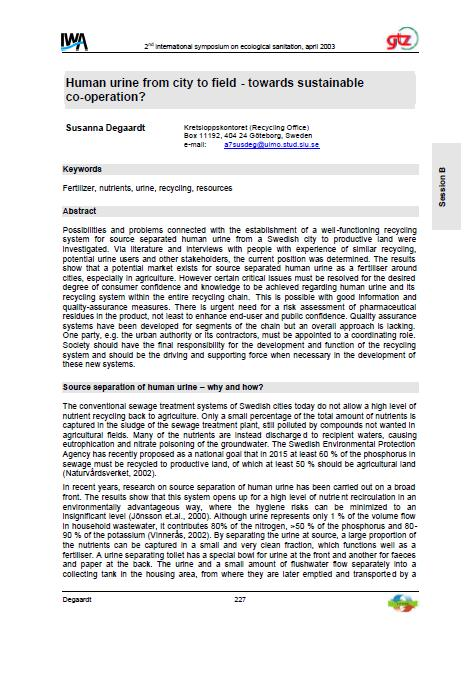
Published in: 2003
Author:
Degaardt, S.
Uploaded by:
SuSanA secretariat
Partner profile:
common upload
3694 Views
12 Downloads
Content - Summary
Possibilities and problems connected with the establishment of a well functioning recycling system for source separated human urine from a Swedish city to productive land were investigated. Via literature and interviews with people with experience of similar recycling, potential urine users and other stakeholders, the current position was determined. The results show that a potential market exists for source separated human urine as a fertiliser around cities, especially in agriculture. However certain critical issues must be resolved for the desired degree of consumer confidence and knowledge to be achieved regarding human urine and its recycling system within the entire recycling chain. This is possible with good information and quality-assurance measures. There is urgent need for a risk assessment of pharmaceutical residues in the product, not least to enhance end-user and public confidence. Quality assurance systems have been developed for segments of the chain but an overall approach is lacking. One party, e.g. the urban authority or its contractors, must be appointed to a coordinating role. Society should have the final responsibility for the development and function of the recycling system and should be the driving and supporting force when necessary in the development of these new systems.
Additional information
Paper presented in "2nd International Symposium on Ecological Sanitation", organised by IWA and GTZ, April 2003
Bibliographic information
Degaardt, S. (2003). Human urine from city to field - towards sustainable co-operation?.
Filter tags
English Urban (entire city) Urine















